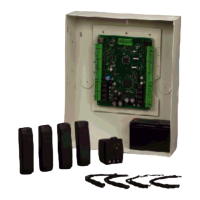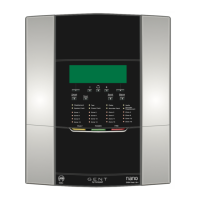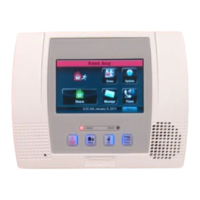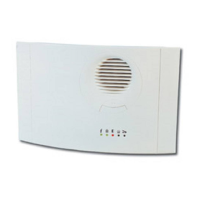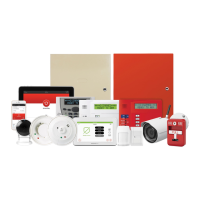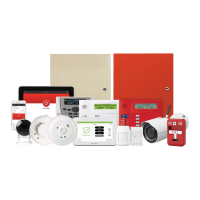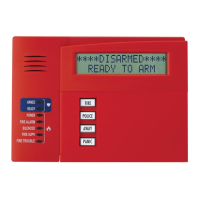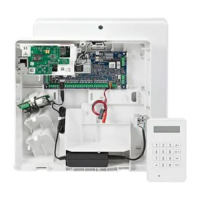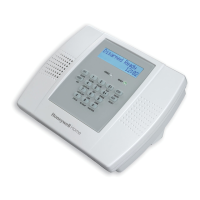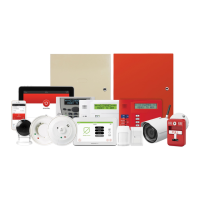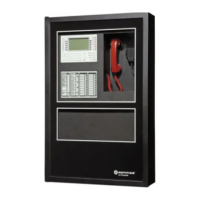
Do you have a question about the Honeywell Notifier NFS2-3030 FACP and is the answer not in the manual?
| Model | NFS2-3030 |
|---|---|
| Type | Fire Alarm Control Panel (FACP) |
| Loops | 2 |
| Operating Voltage | 24VDC |
| Display | LCD |
| Operating Temperature | 32°F to 120°F (0°C to 49°C) |
| Relative Humidity | 10% to 93% non-condensing |
| Maximum Number of Devices | 318 |
| Notification Appliance Circuits (NACs) | 4 |
| Power | 120VAC |
| Battery Backup | Yes |
| Communication Options | Ethernet |
| Networking | Yes |
| Annunciators | Yes |
| Power Supply | 6.0 A total system power |
Information on procedures causing programming errors, runtime errors, or equipment damage.
Information on procedures causing irreversible damage to the control panel, data loss, or personal injury.
Describes the Autonomous Control Unit (ACU) and its role in mass notification systems.
Details equipment combinations for ACU functionality in mass notification systems.
Explains the function of the Local Operating Console (LOC) for mass notification applications.
Outlines equipment combinations for LOC functionality in mass notification systems.
Describes the Central Control Station (CCS) as a system component for emergency communication.
Details equipment combinations for CCS functionality in mass notification systems.
Describes using monitor modules and initiating devices for MN alarms.
Details microphone activations for MN on ACU, LOC, and non-ONYXWorks CCS.
Explains microphone activations for MN on ONYXWorks workstations.
Discusses using strobes and horns for mass notification outputs.
Explains the use of speakers for playing mass notification messages.
Identifies the CAP Gateway as a primary output for an MN System.
Provides programming steps for the Autonomous Control Unit (ACU).
Details programming steps for the Local Operating Console (LOC).
Outlines programming steps for the Central Control Station (CCS).
Describes programming for subsidiary equipment like annunciators and DVC General Zones.
Explains how to disable DCC participation in MN systems.
Details MN control settings and mode selection for the DVC.
Instructions for setting the MN and Fire priority within the system.
Instructions for setting the MN and Fire priority within the system.
Determines how MN alarms suppress fire events on the panel.
Determines how MN alarms suppress fire events on the panel.
Details MN network mapping for NFS2-640 and NFS-320/SYS.
Describes DVC MN mapping for MN Active Tone and All Call.
Defines MN Type IDs for inputs and outputs.
Defines MN Type IDs for inputs and outputs.
Explains MN Special Function Zones for alarms, supervisory, and trouble.
Details programming the MN Active Tone for audible reminders and suppression.
Details programming the MN Active Tone for audible reminders and suppression.
Creates logic zones for activating the MN Active Tone based on MN alarms.
Adds MN Active Tone logic to PAM programming for input row mapping.
Details programming the Fire Active Tone for audible reminders and suppression.
Details programming the Fire Active Tone for audible reminders and suppression.
Assigns message priorities for the Fire Active Tone sequence.
Details programming the Fire Active Tone for audible reminders and suppression.
Creates logic equations for activating the Fire Active Tone.
Adds Fire Logic Zones to PAM programming for Fire Active Tone activation.
Details DVC-RPU installation and addressing for mass notification.
Explains LCD-160 connection and address requirements for LOC functionality.
Details programming for dedicated MN alarm annunciators, including specific panel types and DVC-KD.
Explains DVC General Zones for annunciating active paging.
Sets the MN function for NFS2-3030 or NCA-2 (Subsidiary, ACU, LOC, CCS).
Details how MN alarms are activated and function locally and on the network across different panel types.
Details MN supervisory activation and behavior locally and on the network for different panel types.
Details MN trouble activation and behavior locally and on the network for different panel types.
Resets for systems with both MN and Fire events, prioritizing MN or Fire.
Resets for systems with only MN events present.
General factors for achieving desired event suppression in MN and Fire systems.
Output suppression details when MN has the highest priority, covering zones, outputs, and audio.
Output suppression details when Fire has the highest priority, covering zones, outputs, and audio.
Describes how MN pages from a DVC affect control functions on other panels.
Describes how MN pages from a DVC-RPU affect control functions on other panels.

